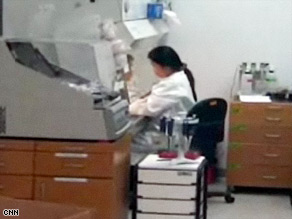
The World Health Organization on Friday reported 2,500 confirmed cases of swine flu in 25 countries, with 44 deaths from the disease.
In the United States, the total number of confirmed cases of the H1N1 virus, as swine flu is officially called, nearly doubled to 1,639 from the day before, with reports coming from 43 states, the Centers for Disease Control and Prevention reported. Dr. Sylvie Briand, acting director of the Global Influenza Programme at WHO, told reporters in a conference call from Geneva, Switzerland, that Brazil is the latest country to report cases of the H1N1 virus, with four. She also noted that the world health agency will remain at pandemic alert level 5 — one step away from its highest level — because while there are an increasing number of cases, there is no evidence of the community transmission outside North America that would push the alert to level 6. Of the 44 deaths reported, two were in the United States and 42 in Mexico, which has the highest concentration of swine flu cases with more than 1,100.
Don’t Miss
2 U.S. swine flu dead had other health problems
Swine flu, part II: What’s in store in the months to come
Mexico lowers swine flu alert as businesses reopen
President Obama, speaking during a town hall meeting for Latinos on the H1N1 virus, said Americans should continue to take basic precautions such as frequently washing their hands. He also said the country should prepare for a particularly tough flu season this fall. “The (H1N1) virus may not have been as virulent as we once feared, but we’re not out of the woods yet,” Obama said. Briand of WHO said many of the new cases being reported now are imported — returning travelers bringing them into their countries — and cases resulting from close contact with those already infected, such as family members. Meanwhile, Britain’s health secretary announced Friday that his country’s Health Protection Agency has sequenced the full genetic code of the H1N1 virus, the first step in producing a European prototype of a swine flu vaccine. “This is critical in understanding how the virus operates and identifying the crucial parts of the virus that can be used in vaccine manufacture,” said a statement from the agency. “Researchers hope that European manufacturers will be able to take delivery of candidate vaccine prototypes in the coming months so preliminary steps to mass vaccine production can begin,” the statement said.